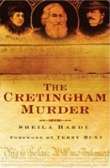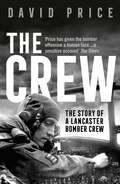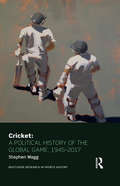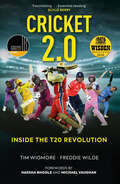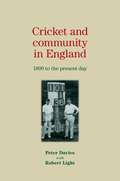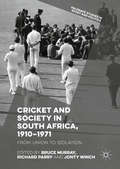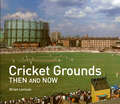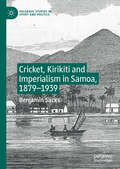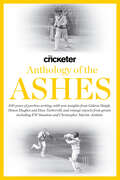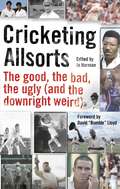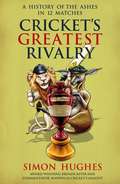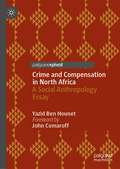- Table View
- List View
The Cretingham Murder
by Sheila HardyDuring renovation work on a hunting lodge near Aldeburgh, Suffolk, in 1996 a carpenter uncovered a plank of wood revealing a chilling pencilled message: ‘A fearful murder was committed the first day of this month (October 1887) at Cretingham. A curate cut the vicar's throat at 12 o’clock at night.’ The discovery brought to light a long lost piece of Suffolk history and with it an intriguing murder mystery. From this strange beginning Sheila Hardy set out to discover the truth of this claim. Using contemporary newspaper reports and court documents, she uncovers the events that led up to the fateful night of 1 October 1887, the following press intrusion in sleepy Cretingham — which became the focus of the country’s media for ten days, and the subsequent trial. It is a tale of religion and influence, politics and social power, mystery and intrigue, and is sure to appeal to all those interested in the shady side of Suffolk’s history.
Cretomania: Modern Desires for the Minoan Past
by Alexandre FarnouxSince its rediscovery in the early 20th century, through spectacular finds such as those by Sir Arthur Evans at Knossos, Minoan Crete has captured the imagination not only of archaeologists but also of a wider public. This is shown, among other things, by its appearance and uses in a variety of modern cultural practices: from the innovative dances of Sergei Diaghilev and Ted Shawn, to public and vernacular architecture, psychoanalysis, literature, sculpture, fashion designs, and even neo-pagan movements, to mention a few examples.Cretomania is the first volume entirely devoted to such modern responses to (and uses of) the Minoan past. Although not an exhaustive and systematic study of the reception of Minoan Crete, it offers a wide range of intriguing examples and represents an original contribution to a thus far underexplored aspect of Minoan studies: the remarkable effects of Minoan Crete beyond the narrow boundaries of recondite archaeological research.The volume is organised in three main sections: the first deals with the conscious, unconscious, and coincidental allusions to Minoan Crete in modern architecture, and also discusses archaeological reconstructions; the second presents examples from the visual and performing arts (as well as other cultural practices) illustrating how Minoan Crete has been enlisted to explore and challenge questions of Orientalism, religion, sexuality, and gender relations; the third focuses on literature, and shows how the distant Minoan past has been used to interrogate critically more recent Greek history.
Cretomania: Modern Desires for the Minoan Past (British School At Athens - Modern Greek And Byzantine Studies #3)
by Nicolett a Momigliano and Alexandre FarnouxSince its rediscovery in the early 20th century, through spectacular finds such as those by Sir Arthur Evans at Knossos, Minoan Crete has captured the imagination not only of archaeologists but also of a wider public. This is shown, among other things, by its appearance and uses in a variety of modern cultural practices: from the innovative dances of Sergei Diaghilev and Ted Shawn, to public and vernacular architecture, psychoanalysis, literature, sculpture, fashion designs, and even neo-pagan movements, to mention a few examples.Cretomania is the first volume entirely devoted to such modern responses to (and uses of) the Minoan past. Although not an exhaustive and systematic study of the reception of Minoan Crete, it offers a wide range of intriguing examples and represents an original contribution to a thus far underexplored aspect of Minoan studies: the remarkable effects of Minoan Crete beyond the narrow boundaries of recondite archaeological research.The volume is organised in three main sections: the first deals with the conscious, unconscious, and coincidental allusions to Minoan Crete in modern architecture, and also discusses archaeological reconstructions; the second presents examples from the visual and performing arts (as well as other cultural practices) illustrating how Minoan Crete has been enlisted to explore and challenge questions of Orientalism, religion, sexuality, and gender relations; the third focuses on literature, and shows how the distant Minoan past has been used to interrogate critically more recent Greek history.
The Crew: The Story of a Lancaster Bomber Crew
by David PriceA moving tribute to the sacrifice and bravery of the fliers of RAF Bomber Command. ****************************** The Crew, based on interviews with Ken Cook, the crew's sole surviving member, recounts the wartime exploits of the members of an Avro Lancaster crew between 1942 and the war's end. Gloucestershire-born bomb aimer Ken Cook, hard-bitten Australian pilot Jim Comans, Navigator Don Bowes, Upper Gunner George Widdis, Tail Gunner 'Jock' Bolland, Flight Engineer Ken Randle and Radio Operator Roy Woollford were seven ordinary young men living in extraordinary times, risking their lives in freedom's cause in the dark skies above Hitler's Reich. From their earliest beginnings – in places as far apart as a Cotswold village and the suburbs of Sydney – through the adventure of training in North America and the dread and danger of the forty-five bombing raids they flew with 97 Squadron, David Price describes the crew's wartime experiences with human sympathy allied to a secure technical understanding of one of the RAF's most iconic aircraft. The drama and anxiety of individual missions – to Kassel, Munich and Augsburg as well as Berlin – is evoked with thrilling immediacy; while the military events and strategic decisions that drove the RAF's area bombing campaign against Nazi Germany are interwoven deftly with the narrative of the crew's operational careers. ****************************** Reviews: 'A sensitive account of the bomber's life... Price has given the bomber offensive a human face. This book [...] has a heart and soul' The Times. 'A fascinating and fast-paced account of the exploits of an Avro Lancaster bomber crew from 97 Squadron RAF' The Herald. 'A remarkable insight into the bravery, determination and skill of British Bomber Command crews during WWII' Waterstones.
Crewe: Railway Town, Company and People 1840–1914
by Diane K. DrummondThis is an important contribution to the new urban history, describing and analysing one of the best examples of a company town in nineteenth-century Europe. This archetypal railway town was built on a green-field site by a railway company in 1842-3. It was a major junction, an administrative centre and an important manufacturing centre. Thus it provides an ideal arena in which to study the relationship between company and people and the effects of this claustrophobic association on emerging economic and social structure and politics in the era of large-scale development and modernisation in Europe and America. Dianne Drummond applies the full range of modern urban-historical approaches in this work. It is a shining example of the ways in which new techniques in research, analysis and comparison can redraw the best-known histories. It will be essential reading for urban historians.
Crewe: Railway Town, Company and People 1840–1914
by Diane K. DrummondThis is an important contribution to the new urban history, describing and analysing one of the best examples of a company town in nineteenth-century Europe. This archetypal railway town was built on a green-field site by a railway company in 1842-3. It was a major junction, an administrative centre and an important manufacturing centre. Thus it provides an ideal arena in which to study the relationship between company and people and the effects of this claustrophobic association on emerging economic and social structure and politics in the era of large-scale development and modernisation in Europe and America. Dianne Drummond applies the full range of modern urban-historical approaches in this work. It is a shining example of the ways in which new techniques in research, analysis and comparison can redraw the best-known histories. It will be essential reading for urban historians.
The Crichel Boys: Scenes from England's Last Literary Salon
by Simon FenwickIn 1945, Eddy Sackville-West, Desmond Shawe-Taylor and Eardley Knollys - writers for the New Statesman and a National Trust administrator - purchased Long Crichel House, an old rectory with no electricity and an inadequate water supply. In this improbable place, the last English literary salon began. Quieter and less formal than the famed London literary salons, Long Crichel became an idiosyncratic experiment in communal living. Sackville-West, Shawe-Taylor and Knollys - later joined by the literary critic Raymond Mortimer - became members of one another's surrogate families and their companionship became a stimulus for writing, for them and their guests. Long Crichel's visitors' book reveals a Who's Who of the arts in post-war Britain - Nancy Mitford, Benjamin Britten, Laurie Lee, Cyril Connolly, Somerset Maugham, E.M. Forster, Cecil Beaton, Vita Sackville-West and Harold Nicolson - who were attracted by the good food, generous quantities of drink and excellent conversation. For Frances Partridge and James Lees-Milne, two of the twentieth century's finest diarists, Long Crichel became a second home and their lives became bound up with the house.Yet there was to be more to the story of the house than what critics variously referred to as a group of 'hyphenated gentlemen-aesthetes' and a 'prose factory'. In later years the house and its inhabitants were to weather the aftershocks of the Crichel Down Affair, the Wolfenden Report and the AIDS crisis. The story of Long Crichel is also part of the development of the National Trust and other conservation movements. Through the lens of Long Crichel, archivist and writer Simon Fenwick tells a wider story of the great upheaval that took place in the second half of the twentieth century. Intimate and revealing, he brings to life Long Crichel's golden, gossipy years and, in doing so, unveils a missing link in English literary and cultural history.
Cricket: 1945 to 2012 (Routledge Research in Sports History)
by Stephen WaggCricket is an enduring paradox. On the one hand, it symbolises much that is outmoded: imperialism; a leisured elite; a rural, aristocratic Englishness. On the other, it endures as a global game and does so by skilful adaptation, trading partly on its mythic past and partly on its capacity to repackage itself. This ambitious new history recounts the politics of cricket around the world since the Second World War, examining key cultural and political themes, including decolonisation, racism, gender, globalisation, corruption and commercialisation. Part One looks at the transformation of cricket cultures in the ten territories of the former British Empire in the years immediately after 1945, a time when decolonisation and the search for national identity touched every cricket playing region in the world. Part Two focuses on globalisation and the game’s evolution as an international sport, analysing: social change and the Ashes; the campaigns for new cricket formats; the development of the women’s game; the new breed of coach; the limits to the game’s global expansion; and the rise of India as the world’s leading cricket power. Cricket: A Political History of the Global Game, 1945-2017 is fascinating reading for anybody interested in the contemporary history of sport.
Cricket: 1945 to 2012 (Routledge Research in Sports History)
by Stephen WaggCricket is an enduring paradox. On the one hand, it symbolises much that is outmoded: imperialism; a leisured elite; a rural, aristocratic Englishness. On the other, it endures as a global game and does so by skilful adaptation, trading partly on its mythic past and partly on its capacity to repackage itself. This ambitious new history recounts the politics of cricket around the world since the Second World War, examining key cultural and political themes, including decolonisation, racism, gender, globalisation, corruption and commercialisation. Part One looks at the transformation of cricket cultures in the ten territories of the former British Empire in the years immediately after 1945, a time when decolonisation and the search for national identity touched every cricket playing region in the world. Part Two focuses on globalisation and the game’s evolution as an international sport, analysing: social change and the Ashes; the campaigns for new cricket formats; the development of the women’s game; the new breed of coach; the limits to the game’s global expansion; and the rise of India as the world’s leading cricket power. Cricket: A Political History of the Global Game, 1945-2017 is fascinating reading for anybody interested in the contemporary history of sport.
Cricket 2.0: Inside the T20 Revolution
by Tim Wigmore Freddie Wilde‘A fascinating insight into how the newest format has impacted on the game at every level including Test cricket. Essential reading for T20 fans and traditional followers’ - Scyld Berry‘An invaluable guide by two smart young writers to the story of T20 cricket, to the strategies that underpin it and to the players who have made the format’ - Mike Atherton‘Tim and Freddie are the torchbearers of tomorrow, we must listen to them’ - Harsha Bhogle‘T20 is here to stay and we should celebrate and cherish all the skills involved . . . it is only going to get bigger’ - Michael VaughanCricket 2.0 tells the story of how an old, traditional game was transformed by Twenty20 and how this format moved from being a gimmick to the face of modern cricket.Using exclusive interviews with those at its heart, Tim Wigmore and Freddie Wilde chronicle this revolution with insight, forensic analysis and story-telling verve.The iconic captain Brendon McCullum, England’s T20 visionaries Eoin Morgan and Jos Buttler and Trinidad’s Kieron Pollard and Sunil Narine, who rose to become among the first T20 millionaires, explain how they shaped T20 - and how it shaped them. Test greats Rahul Dravid and Ricky Ponting recount what a sea-change T20 represented and decode T20 strategy. AB de Villiers explores the limits of modern batting. The Afghan phenomenon Rashid Khan shows that T20 superstars can now come from anywhere. Venky Mysore, the cricket revolutionary you have never heard of, reveals how the game is changing off the field.Through a prism of compelling human-interest stories and featuring interviews with more than fifty players and coaches, Cricket 2.0 examines how a cocktail of globalisation, new aggressive tactics and huge investment are changing the sport faster than ever before, while analysing the myriad ways in which a traditional game has been revolutionised forever, both on and off the pitch.Told with vivid clarity and insight, this is the extraordinary and previously misunderstood story of Twenty20 cricket and how it is shaping the future of the game.
Cricket and community in England: 1800 to the present day (PDF)
by Peter DaviesAvailable in paperback for the first time, Cricket and Community in England: 1800 to the Present Day is a path-breaking enquiry into the social history of the summer game. It is written by two specialist cricket historians and based on extensive primary research. It traces the history of the sport at grassroots level from its origins right up to the present day. It will appeal to the cricket historian and the general sports enthusiast alike. The book has two main goals: to provide readers with an accessible introduction to the history of grassroots cricket in England and to supply a clear overview of the different phases of this history. The structure of book is chronological but also thematic. The six chapters look at such issues as early cricket, the origins of clubs, competition, the two world wars, multiculturalism and cricket in the twenty-first century.
Cricket and community in England: 1800 to the present day (G - Reference,information And Interdisciplinary Subjects Ser.)
by Peter DaviesAvailable in paperback for the first time, Cricket and Community in England: 1800 to the Present Day is a path-breaking enquiry into the social history of the summer game. It is written by two specialist cricket historians and based on extensive primary research. It traces the history of the sport at grassroots level from its origins right up to the present day. It will appeal to the cricket historian and the general sports enthusiast alike. The book has two main goals: to provide readers with an accessible introduction to the history of grassroots cricket in England and to supply a clear overview of the different phases of this history. The structure of book is chronological but also thematic. The six chapters look at such issues as early cricket, the origins of clubs, competition, the two world wars, multiculturalism and cricket in the twenty-first century.
Cricket and Society in South Africa, 1910–1971: From Union to Isolation (Palgrave Studies in Sport and Politics)
by Bruce Murray Richard Parry Jonty WinchThis book explores how cricket in South Africa was shaped by society and society by cricket. It demonstrates the centrality of cricket in the evolving relationship between culture, sport and politics starting with South Africa as the beating heart of the imperial project and ending with the country as an international pariah. The contributors explore the tensions between fragmentation and unity, on and off the pitch, in the context of the racist ideology of empire, its ‘arrested development’ and the reliance of South Africa on a racially based exploitative labour system. This edited collection uncovers the hidden history of cricket, society, and empire in defining a multiplicity of South African identities, and recognises the achievements of forgotten players and their impact.
Cricket and Society in South Africa, 1910–1971: From Union to Isolation (Palgrave Studies in Sport and Politics)
by Bruce Murray Richard Parry Jonty WinchThis book explores how cricket in South Africa was shaped by society and society by cricket. It demonstrates the centrality of cricket in the evolving relationship between culture, sport and politics starting with South Africa as the beating heart of the imperial project and ending with the country as an international pariah. The contributors explore the tensions between fragmentation and unity, on and off the pitch, in the context of the racist ideology of empire, its ‘arrested development’ and the reliance of South Africa on a racially based exploitative labour system. This edited collection uncovers the hidden history of cricket, society, and empire in defining a multiplicity of South African identities, and recognises the achievements of forgotten players and their impact.
Cricket Banter: Chat, Sledging & Laughs from The Middle Stump
by Dan Whiting Liam KennaCricket Banter is all the rage among the cricketing cognoscenti and the chat, the sledging and the humour behind the game is all covered here, by those boys at The Middle Stump, in conjunction with Factor 50. Here we cover most aspects of cricket, as we speak with some of the finest, funniest, larger than life characters from the sport over the last thirty years, along with a selection of hilarious stories about the game. It’s a highly amusing book; read it and you’ll see why most cricketers, whether from club, county or international level, as well as the sport’s most prominent journalists are all talking about those cheeky chaps from The Middle Stump, and their alternative take on the game of cricket.
Cricket Grounds Then and Now: Then And Now (Then and Now)
by Brian LevisonA history of beloved cricket grounds from around the world. Using a Then and Now format, historic pictures of cricket grounds are paired with their modern-day equivalent to show the dramatic changes that have taken place.
Cricket, Kirikiti and Imperialism in Samoa, 1879–1939 (Palgrave Studies in Sport and Politics)
by Benjamin SacksThis book considers how Samoans embraced and reshaped the English game of cricket, recasting it as a distinctively Samoan pastime, kirikiti. Starting with cricket’s introduction to the islands in 1879, it uses both cricket and kirikiti to trace six decades of contest between and within the categories of ‘colonisers’ and ‘colonised.’ How and why did Samoans adapt and appropriate the imperial game? How did officials, missionaries, colonists, soldiers and those with mixed foreign and Samoan heritage understand and respond to the real and symbolic challenges kirikiti presented? And how did Samoans use both games to navigate foreign colonialism(s)? By investigating these questions, Benjamin Sacks suggests alternative frameworks for conceptualising sporting transfer and adoption, and advances understandings of how power, politics and identity were manifested through sport, in Samoa and across the globe.
The Cricketer Anthology of the Ashes
by Huw TurbervillThis superb anthology showcases 100 years of peerless writing on the Ashes from The Cricketer magazine. Insightful new contributions from today's best cricket writers including Gideon Haigh, Simon Hughes and Huw Turbervill sit alongside vintage reports, features and comment pieces from greats including Pelham 'Plum' Warner, EW Swanton and Christopher Martin-Jenkins. Relive the brilliance of Don Bradman, Harold Larwood, Jim Laker, Geoffrey Boycott, Ian Botham, Shane Warne, Adam Gilchrist, Andrew Flintoff and others in this fresh new take on the giants of the game. Featuring Simon Hughes' ultimate Ashes XI, Gideon Haigh's five greatest series and lively detours into the controversies and scandals which have defined sport's greatest contest, this definitive history from the world's foremost cricket magazine is as colourful as the Ashes themselves.
Cricketing Allsorts: The Good, The Bad, The Ugly (and The Downright Weird)
by Jo HarmanMore than any other sport, cricket highlights our peculiarities and quirks, our strengths and weaknesses – sporting or otherwise. It welcomes all-comers, no matter what their quirks or achievements. Cricketing Allsorts celebrates those oddities and records, and offers a lively portrait of the game and its players in all their glory and eccentricity. Presented in the form of 'top ten' lists and illustrated with photographs from through the ages, Cricketing Allsorts covers all aspects of the game, both on and off the field. It guides us through topics such as: - the top cricketing love affairs, featuring Keith Miller and Princess Margaret- the greatest bowing partnerships, including Wasim & Waqar, Laker & Lock and Ramadhin & Valentine- the best fictional cricketers, including Hooker Knight and Flashman- the most brutal bowling spells, as Donald roughs up Atherton and Ambrose mauls England- the game's most iconic fashion statements, such as Clive Lloyd's glasses and Gower's blue socks- the greatest dynasties, including the Cowdreys and the Pollocks- the most memorable sixes, featuring Dhoni, Sobers and Albert Trott- the most unlikely cricket fans, such as Barack Obama, Roger Federer and the Taliban. An engaging, witty and affectionate look at all things cricket, Cricketing Allsorts is the ultimate book for anyone who wants to know anything and everything about the game, and the perfect gift for any cricket fan.
Cricket's Greatest Rivalry: FREE SAMPLER A History of the Ashes in 10 Matches
by Simon HughesFrom the William Hill Award-Winning Author of A Lot of Hard Yakka comes Cricket's Greatest Rivalry: A History of the Ashes in 12 Matches by Simon Hughes.A fast-paced, distinctive history of the iconic, 137-year-old cricketing rivalry between England and Australia published in the year of back-to-back Ashes contests.No other sport has a fixture like the Ashes. From the early 1880s the rivalry between these two great sporting nations has captured the public imagination and made sporting legends of its stars. Commentator, analyst and award-winning cricket historian Simon Hughes tells the story of the 12 seminal series that have become the stuff of sporting folklore. Cricket's Greatest Rivalry places you right at the heart of the action of each pivotal match, explaining the social context of the time, the atmosphere of the crowd and the background and temperaments of the players that battled in both baggy green and blue caps.The book also includes complete statistics and records of all the Ashes fixtures and results and much more!
Cries For Democracy: Writings and Speeches from the Chinese Democracy Movement (PDF)
by Minzhu Han"Han Minzhu" and her assistant editor, "Hua Sheng," both writing under pseudonyms to protect their identities, present a rich collection of translations of original writings and speeches from the 1989 Chinese Democracy Movement--flyers, "big-character" posters, "small-character" posters, handbills, poems, articles from nonofficial newspapers and journals, government statements, and transcriptions of tapes. Linked by a commentary setting the documents in the context of the movement's history and of Chinese social and political life, these expressions--indeed, cries--of the participants in the passionate demonstrations in Beijing and other Chinese cities powerfully convey the atmosphere of this extraordinary protest. In the face of the ensuing campaign of intimidation and repression in China, this book enables Western readers to see through the eyes of Chinese students, intellectuals, workers, and other citizens the realities behind the reports and visual images that flooded the media during the spring of 1989. The editors believe that the underlying motivations, emotions, and aspirations of the prodemocracy demonstrators can best be communicated to those outside China by translations that aim as much as possible to capture the original words, tones, and rhythms of the Chinese people. This book is a unique collection of political and personal documents, and it is also a dramatic presentation of the movement. The lucid commentary, the arrangement of selections in approximate chronological order, and the use of photographs combine to create a vivid and flowing narrative. Beginning with the student discontent and restlessness that pervaded Chinese campuses in the winter of 1989, and continuing through to the violent suppression of the Democracy Movement in June with the bloody army takeover of Tiananmen Square and sweeping arrests of activists, the story shows how moderate demands on the part of students grew into a mass antigovernment protest and resistance to martial law in Beijing. Highlighting the demands and goals of the protesters and the attitude of the students toward the Chinese Communist Party, the work movingly evokes the determination, idealism, courage, and flashes of humor that were the essence of this unforgettable spring.
Cries For Democracy: Writings and Speeches from the Chinese Democracy Movement
by Minzhu Han"Han Minzhu" and her assistant editor, "Hua Sheng," both writing under pseudonyms to protect their identities, present a rich collection of translations of original writings and speeches from the 1989 Chinese Democracy Movement--flyers, "big-character" posters, "small-character" posters, handbills, poems, articles from nonofficial newspapers and journals, government statements, and transcriptions of tapes. Linked by a commentary setting the documents in the context of the movement's history and of Chinese social and political life, these expressions--indeed, cries--of the participants in the passionate demonstrations in Beijing and other Chinese cities powerfully convey the atmosphere of this extraordinary protest. In the face of the ensuing campaign of intimidation and repression in China, this book enables Western readers to see through the eyes of Chinese students, intellectuals, workers, and other citizens the realities behind the reports and visual images that flooded the media during the spring of 1989. The editors believe that the underlying motivations, emotions, and aspirations of the prodemocracy demonstrators can best be communicated to those outside China by translations that aim as much as possible to capture the original words, tones, and rhythms of the Chinese people. This book is a unique collection of political and personal documents, and it is also a dramatic presentation of the movement. The lucid commentary, the arrangement of selections in approximate chronological order, and the use of photographs combine to create a vivid and flowing narrative. Beginning with the student discontent and restlessness that pervaded Chinese campuses in the winter of 1989, and continuing through to the violent suppression of the Democracy Movement in June with the bloody army takeover of Tiananmen Square and sweeping arrests of activists, the story shows how moderate demands on the part of students grew into a mass antigovernment protest and resistance to martial law in Beijing. Highlighting the demands and goals of the protesters and the attitude of the students toward the Chinese Communist Party, the work movingly evokes the determination, idealism, courage, and flashes of humor that were the essence of this unforgettable spring.
Crime and Community in Reformation Scotland: Negotiating Power in a Burgh Society (Perspectives in Economic and Social History)
by J R FalconerBased on church and state records from the burgh of Aberdeen, this study explores the deeper social meaning behind petty crime during the Reformation. Falconer argues that an analysis of both criminal behaviour and law enforcement provides a unique view into the workings of an early modern urban Scottish community.
Crime and Community in Reformation Scotland: Negotiating Power in a Burgh Society (Perspectives in Economic and Social History #23)
by J R FalconerBased on church and state records from the burgh of Aberdeen, this study explores the deeper social meaning behind petty crime during the Reformation. Falconer argues that an analysis of both criminal behaviour and law enforcement provides a unique view into the workings of an early modern urban Scottish community.
Crime and Compensation in North Africa: A Social Anthropology Essay
by Yazid Ben HounetAs the 21st century began, Algeria, Morocco, and North Sudan launched some much-publicised “reconciliation” policies, or, in the case of North Sudan, “pacification” policies. Algeria, following its Clemency policy (1995) and Civil Concord Law (1999), held a referendum in 2005 and subsequently implemented the measures of its Charter for Peace and National Reconciliation. This charter is Algeria’s latest policy aimed at settling the accounts of a murderous decade (1990s) between the state and armed Islamic groups. In Morocco, an arbitration committee was set up in 1999, followed by the Equity and Reconciliation Commission in 2004, to turn the page on the “Years of Lead”—a period during the rule of King Hassan II during which state crimes such as torture, imprisonment, and murder were committed. Finally, in Sudan (North Sudan since 2011), peace negotiations were held in 1989 and a peace process has been ongoing since 2005, with an aim to resolve violent conflicts and war crimes that are shaking Darfur and North Kordofan. At the centre of all these reconciliation and pacification mechanisms lies a practice that has been scarcely studied: (monetary) compensation for the crimes committed.Shedding light on this under-studied topic from the North African field, this volume investigates: What meanings can compensation have when it is aimed at repairing crimes? Is it necessary, sufficient, or admissible? How can it be implemented and accepted by the victims themselves and by society? These questions about compensation lead the reader through discussions on the nature of crime, punishment, reparation, reconciliation, and the way these concepts were and are now understood in these three North African countries.
